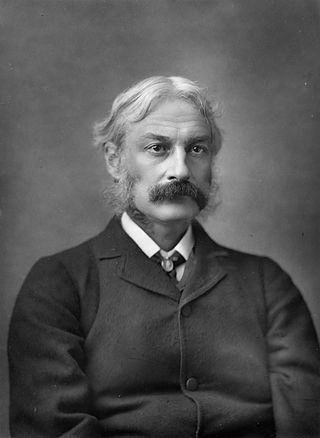
Andrew Lang was a Scottish poet, novelist, literary critic, and contributor to the field of anthropology. He is best known as a collector of folk and fairy tales. The Andrew Lang lectures at the University of St Andrews are named after him.

Thomas Penson De Quincey was an English writer, essayist, and literary critic, best known for his Confessions of an English Opium-Eater (1821). Many scholars suggest that in publishing this work De Quincey inaugurated the tradition of addiction literature in the West.

Johann Ludwig Tieck was a German poet, fiction writer, translator, and critic. He was one of the founding fathers of the Romantic movement in the late 18th and early 19th centuries.
Henry George Bohn was a British publisher. He is principally remembered for the Bohn's Libraries which he inaugurated. These were begun in 1846, targeted the mass market, and comprised editions of standard works and translations, dealing with history, science, classics, theology and archaeology.
Marcia was the legendary third female ruler and a regent of the Britons, as recounted by Geoffrey of Monmouth. She is presented by Geoffrey as "one of the most illustrious and praiseworthy of women in early British history".
Thomas Keightley was an Irish writer known for his works on mythology and folklore, particularly Fairy Mythology (1828), later reprinted as The World Guide to Gnomes, Fairies, Elves, and Other Little People.

William Henry Giles Kingston, often credited as W. H. G. Kingston, was an English writer of boys' adventure novels.

Confessions of an English Opium-Eater (1821) is an autobiographical account written by Thomas De Quincey, about his laudanum addiction and its effect on his life. The Confessions was "the first major work De Quincey published and the one that won him fame almost overnight".

The London Magazine is the title of six different publications that have appeared in succession since 1732. All six have focused on the arts, literature and miscellaneous topics.

The Gespensterbuch is a collection of German ghost stories written by August Apel and Friedrich Laun and published in five volumes between 1810 and 1815. The fifth volume was also published as the first volume of Apel and Laun's Wunderbuch (1815–1817), which served as a continuation of the Gespensterbuch series.
William Henry Leeds (1786–1866) was an English architectural critic and journalist.

Johann Gustav Gottlieb Büsching was a German antiquary. His knowledge of subjects pertaining to Germany in the Middle Ages was notable.
The following is a timeline of the history of the city of Derby, England.
The following is a list of works about Amsterdam, Netherlands.

This is a bibliography of works by Thomas De Quincey, a romantic English writer. Chiefly remembered today for his Confessions of an English Opium-Eater (1821), De Quincey's oeuvre includes literary criticism, poetry, and a large selection of reviews, translations and journalism. His private correspondence and diary have also been published.
Volksmärchen der Deutschen is an early collection of German folk stories retold in a satirical style by Johann Karl August Musäus, published in five volumes between 1782 and 1787.
"Der blonde Eckbert" is a Romantic fairy tale written by Ludwig Tieck at the end of the eighteenth century. It first appeared in 1797 in a collected volume of folktales published by Tieck under the publisher Friedrich Nicolai in Berlin. For some literary scholars and historians, the publication of Eckbert represents the beginning of a specifically German romantic movement.
The Misses Corbett were sisters Walterina Cunningham and Grace Corbett. They were Scottish authors who wrote a number of books, poems and songs in the early nineteenth century, most notably a series of anthologies called The Odd Volume (1826–1827). While their books were published anonymously, generally as "by the authors of The Odd Volume", they were traditionally ascribed to "The Misses Corbett", "Misses M and — Corbett" or "Marion and Margaret Corbett".

"Wake Not the Dead" is a short story by Ernst Raupach published in Minerva magazine in 1823. It was one of the earliest vampire stories. The story was translated into English in Popular Tales and Romances of the Northern Nations (1823) without crediting Raupach, and was often misattributed to Ludwig Tieck in the English-speaking world.
George Godfrey Cunningham was a Scottish writer, compiler, and translator.












